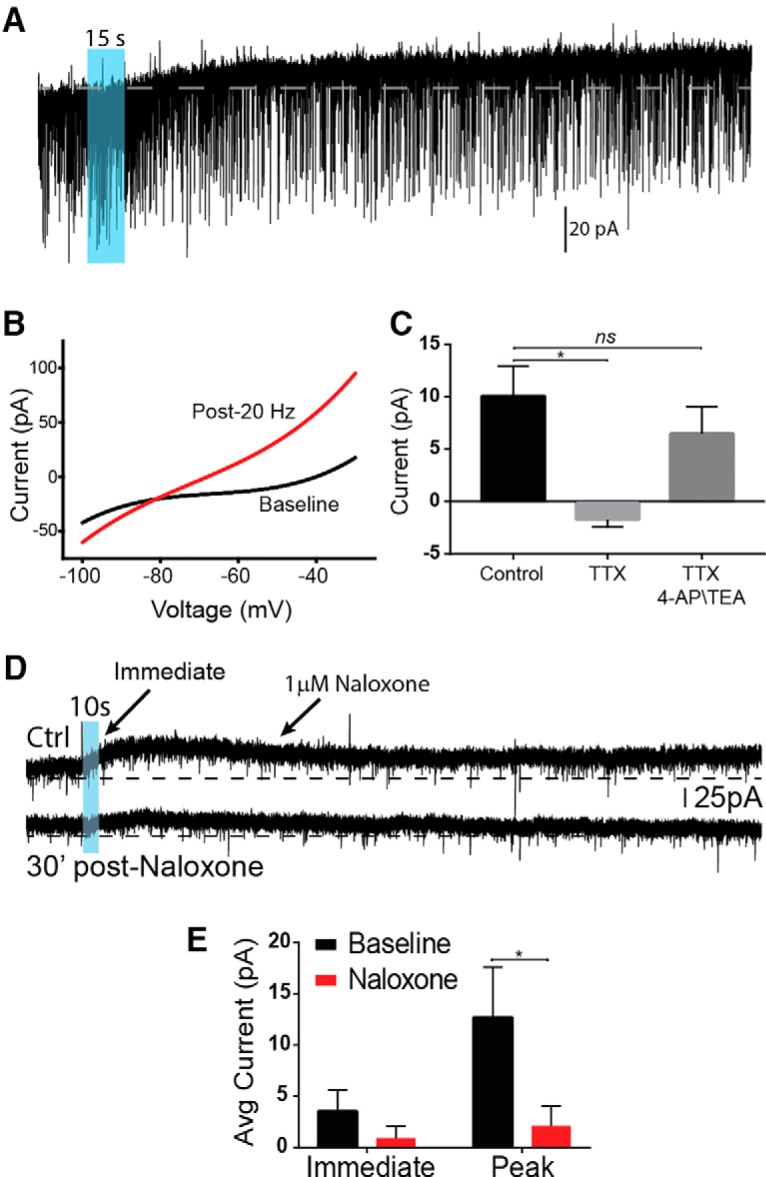Figure 6.

High-frequency stimulation of POMC neurons causes release of β-endorphin. A, 20 Hz (10 ms pulse width) for 15 s of 470 nm light could elicit a slow, long-lasting outward current. B, Following high-frequency stimulation, the I/V curve crossed closer to EK + (average -82.7 ± 1.6 mV) and exhibited inward rectification, suggesting GIRK channels had been activated. C, High-frequency response could be blocked with TTX and recovered with addition of 0.5 mM 4-AP and 7.5 mM TEA (one-way ANOVA, p < 0.05, Tukey’s post hoc). D, E, The response to high-frequency stimulation is antagonized by bath application of 1 μM naloxone, suggesting that β-endorphin is acting on postsynaptic opioid receptors. D, Bar graphs showing naloxone block on the immediate and peak response following high-frequency stimulation (n = 4, average over 10-s period). Paired t test found the peak amplitude was significantly inhibited by naloxone (paired t test, * p < 0.05).
